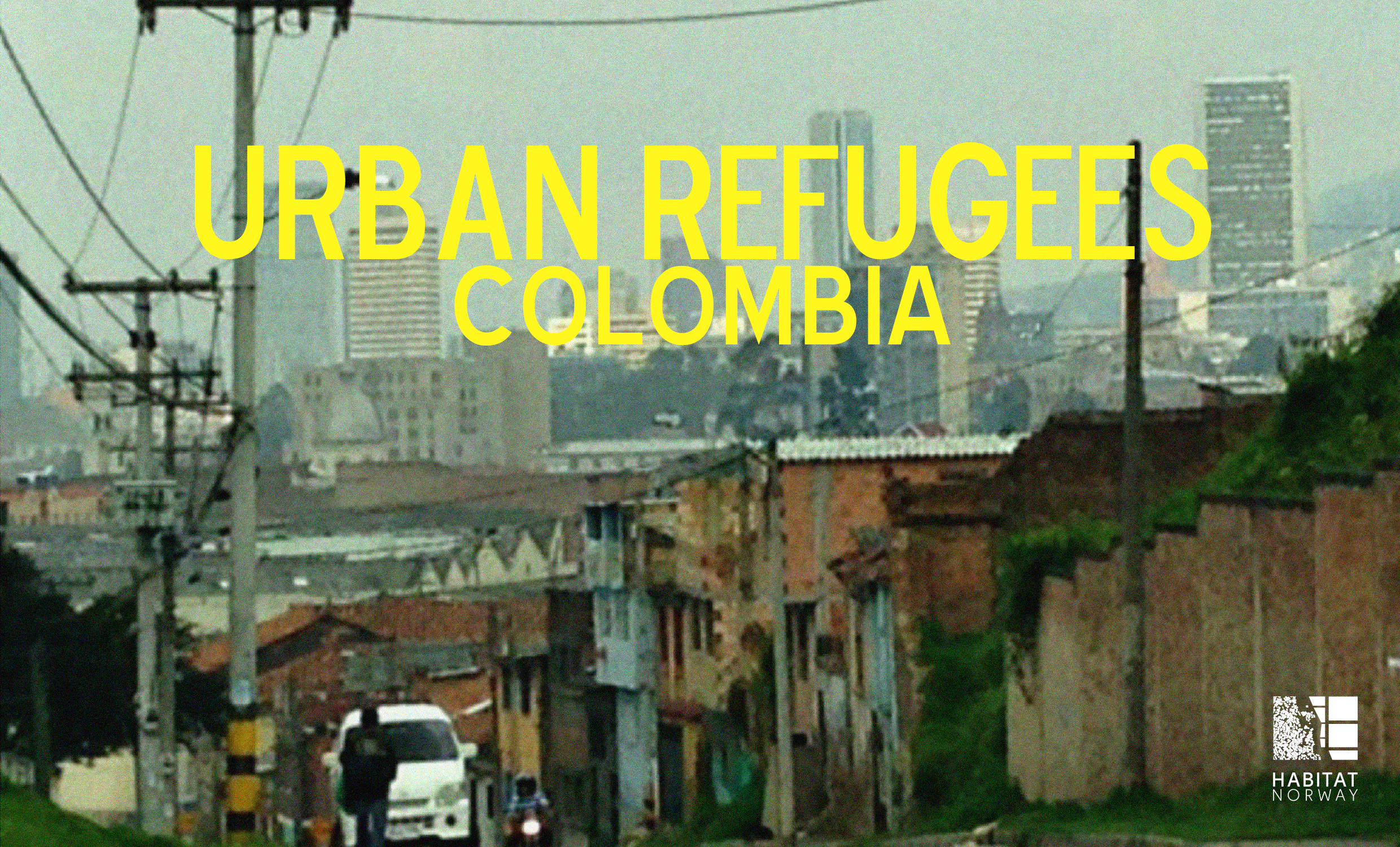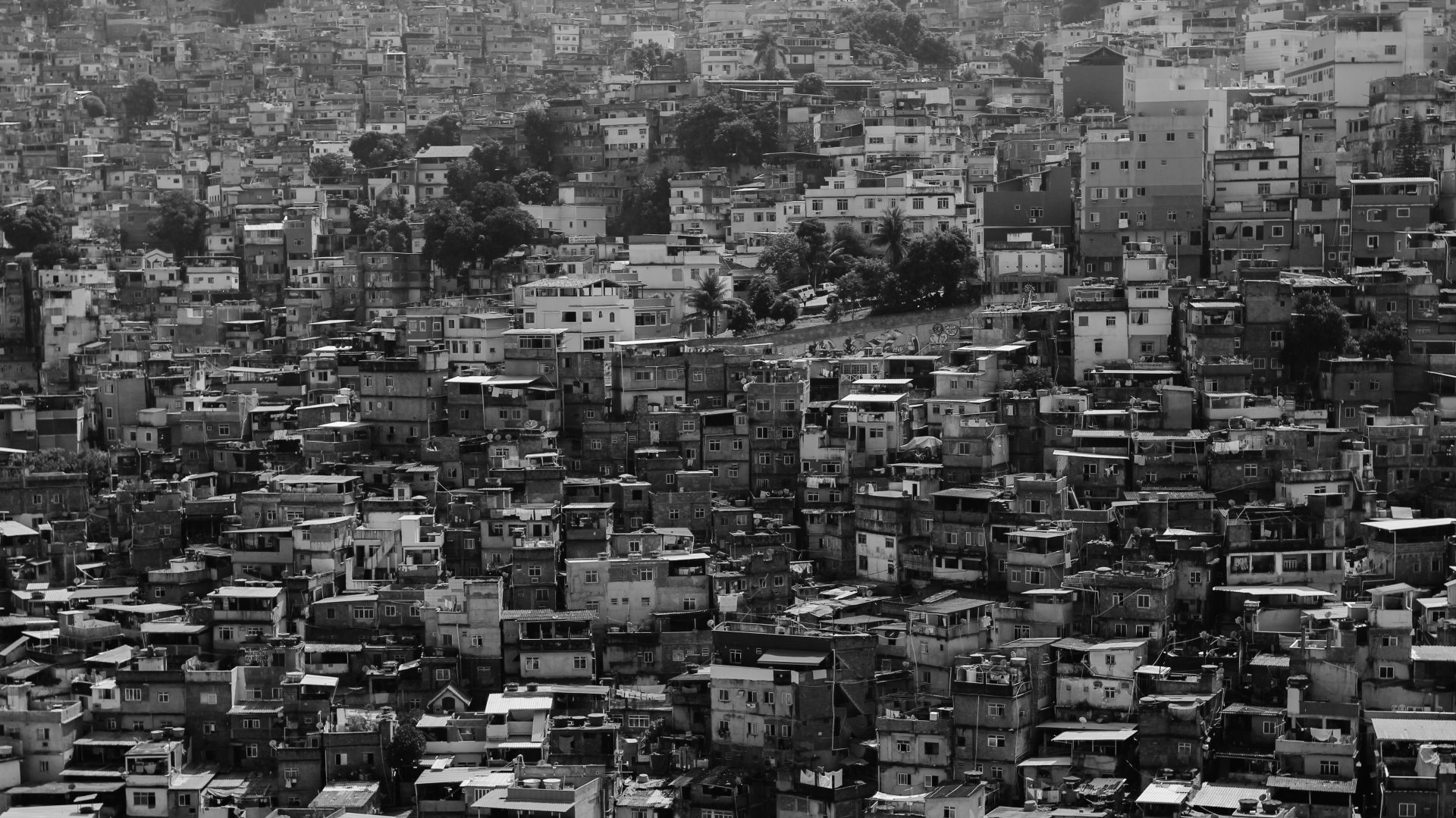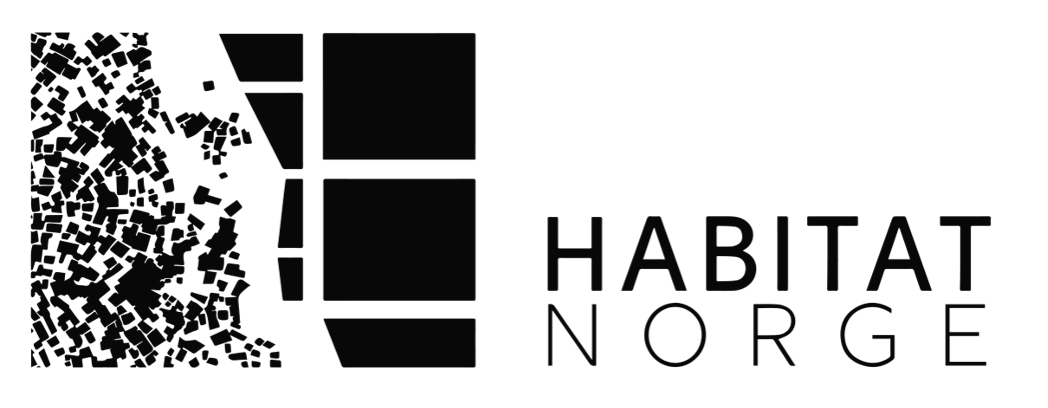
- This event has passed.
Urban Refugees Colombia
June 12, 2014 @ 7:00 pm - 9:00 pm

URBAN REFUGEES
Nær halvparten av verdens flyktninger lever i dag i urbane områder, i 2009 var tallet 5,5 millioner. Det gjør også i underkant av halvparten av verdens 27 millioner internt fordrevne eller Internally Displaced Persons (IDPs). Dette er kun tallene på registrerte flyktninger, de faktiske tallene må regnes å være langt høyere. De siste årene har vi opplevd flere store humanitære kriser som bidrar til økning av tallet på verdens urbane flyktninger.
Urbane flyktninger og internt fordrevne regnes som en av de mest sårbare gruppene blant urbane fattige. Disse gruppene er ofte vanskelige å nå med hjelp ettersom de forsvinner i byens mylder og uformelle områder, samtidig som urbane flyktninger ofte nedprioriteres sett opp mot flyktninger i formelle og uformelle leire.
I 2014 vil Habitat Norge rette søkelys på urbane flyktninger og internt fordrevne. Hvorfor er urbane flyktninger særlig sårbare? Hvordan er urbane flyktninger med på å forandre byer? Hva er sammenhengen mellom urbane flyktninger og urban fattigdom? Hva er disse innbyggernes største utfordringer med tanke på bolig, mat, rent vann og annen type infrastruktur? Vil vi gjennom året se geografisk på noen av de større urbane flyktningkrisene i dag.
Torsdag 12. juni kl 19.00 på Kulturhuset på Youngstorget, arrangeres første kveldsseminar om Colombia.
Den væpnede konflikten i Colombia har ført til verdens høyeste antall internt fordrevne, med så mange som 4,8 til 5,5 millioner mennesker. De fleste kommer fra rurale områder og har søkt til landets tolv største byer. Tross noen positive tegn i den pågående fredsprosessen, er utsiktene til en stans i volden trolig ikke innenfor rekkevidde. Det pågående valget kan i verste fall bidra til økt ustabilitet.
Vil vi gi en introduksjon til konflikten og hvor fredsprosessen står, for så å belyse hvordan konflikten har bidratt til en urban vekst og et høyt antall urbane fattige.
Spørsmål vi vil stille er: Hvordan har tilstrømmingen av mennesker påvirket byene? Hva er de internt fordrevnes særlige sårbarheter? Hvordan innlemmes de i ny urban planlegging?
Til arrangementet kommer det innledere fra ulike fagfelt, detaljert program er under ferdigstillelse.
__________________________________
Today almost half of the world’s refugees live in urban areas , in 2009 this counted 5,5 million people. The same goes for slightly less than half of the world’s 27 million Internally Displaced Persons (IDPs) . This is however only the numbers over registered refugees, the real number is likely to be higher. The last couple of years the world has also witnessed several large humanitarian crisis, which has contributed to a significant increase of the numbers of urban refugees and IDPs.
Urban refugees and IDPs are reckoned some of the most vulnerable groups amongst urban poor. These groups are often difficult to reach with aid, as they merge into the urban fabric and informal areas, but they are also given lower priority for assistance compared to camp refugees.
In 2014 Habitat Norway will dedicate our activities to shed light on urban refugees and IDPs. What makes some urban refugees and IDPs particularly vulnerable? How do these groups contribute to changing cities? What is the connection between urban refugees and urban poverty? What are these citizens’ challenges in terms of adequate shelter, food, safe water and access to other basic services? Throughout the year we will look geographically at some of the largest displacements to cities and address these issues.
First evening seminar will be Thursday 12 June at 19.00 at Kulturhuset, Youngstorget, about Colombia.
The violent conflict in Colombia has led to the largest forced displacement within a country, with as many as between 4,8 to 5,5 million people. A large part of the displaced has left rural areas for refuge in the 12 largest cities in the country. The peace process has shown some positive signs over the past years, yet a halt to the violence seems distant. The ongoing election may in worst case scenario contribute to an increase of tension.
In the seminar we will give an introduction to the conflict and status of the peace process, and then shed light on how the conflict has contributed to urban growth and a high number of urban poor.
Questions we will raise are: How has the influx of displaced persons affected the cities? What are the IDPs particular vulnerabilities? How are the IDPs included in the urban planning?
Program
Therese Staal Brekke, deputy of Habitat Norway – Introduction
Dr. Jennifer Schirmer, University of Oslo – “How Colombian Cities Have Coped with Violence, the Displaced and the Demobilized. Will the Peace Process Help?”. Since the 1980s, cities in Colombia have had to cope with the consequences of a conflict that has created one of the highest levels of displacement in the world, with a substantial portion of these IDPs fleeing to the big cities, where they must share communities with the demobilized and the unemployed. While there have been deeply entrenched connections between criminal and political actors, possibilities for creating safer and more humane cities have also been created by new political coalitions and monetary distributional policies in the late 90s until the mid 2000s, only to falter at the end of the decade with more violence. Do the peace talks now imply the potential for Colombia to make better and more humane cities for its citizens once again?
Jørn-Casper Øwre, Norwegian Refugee Council – “Urban displacement in Colombia”. What are the conditions and rights of the more than 5,5 Internally displaced in Colombia, a majority of which are displaced to urban areas and the largest cities? NRC will provide a general picture of the vulnerabilities of urban refugees and IDPs worldwide and more specific to the Colombian context.
Jose Hernandez, Arkitekt, Space Group – ”Urban Planning and Social Housing – case Medellin”. Hernandez, himself an architect from Colombia, will talk about Colombian social housing schemes and urban planning models which has been remarkable for the Colombian context to emphasize on inclusion of informal areas and address urban poor and internally displaced.
Discussion
Moderator: Therese Staal Brekke
References:
1. FNs Høykommiser for Flyktninger
2. http://urban-refugees.org/identity/


